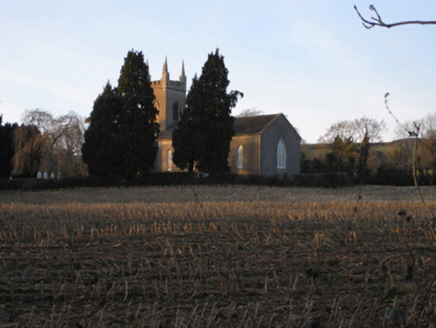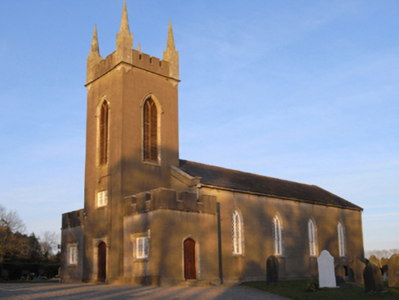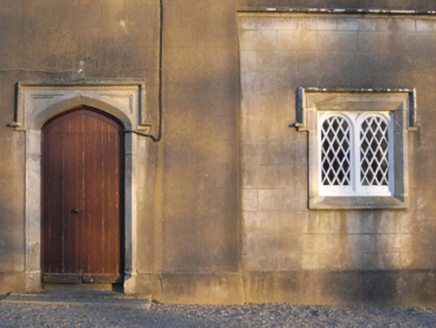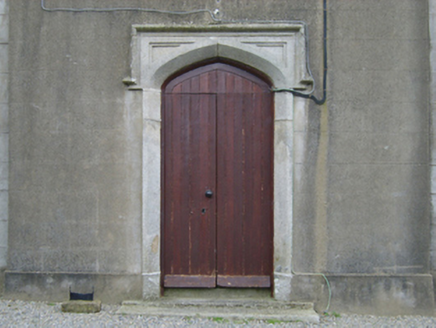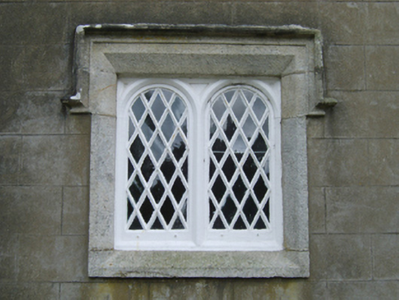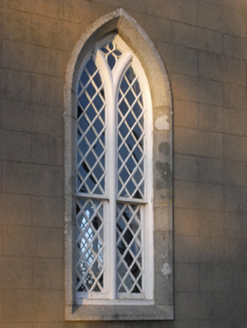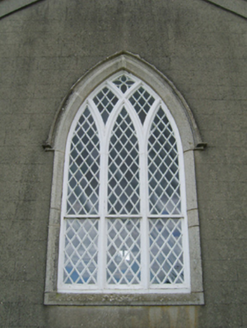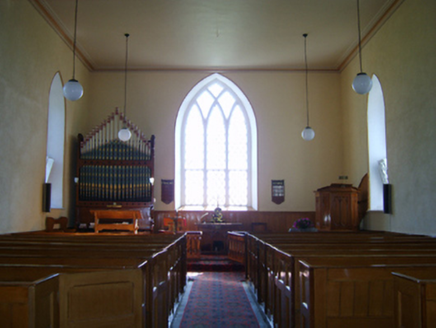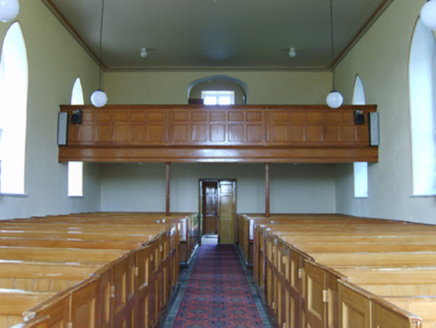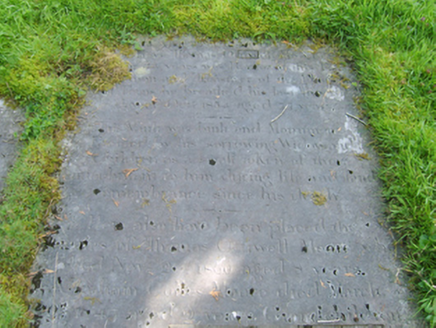Survey Data
Reg No
15701113
Rating
Regional
Categories of Special Interest
Architectural, Artistic, Historical, Social
Original Use
Church/chapel
In Use As
Church/chapel
Date
1810 - 1835
Coordinates
312236, 156081
Date Recorded
08/07/2007
Date Updated
--/--/--
Description
Detached four-bay double-height single-cell Board of First Fruits Church of Ireland church, designed 1812; built 1831, on a rectangular plan with single-bay single-storey vestries centred on single-bay three-stage tower to entrance (west) front on a square plan. Pitched slate roof with clay or terracotta ridge tiles, cut-granite coping to gables with cut-granite "saddleback" coping to gable to entrance (west) front on rendered kneelers, and cast-iron rainwater goods on rendered eaves retaining cast-iron square hoppers and downpipes. Rendered, ruled and lined walls; rendered, ruled and lined surface finish to tower on battered plinth with cut-granite stringcourse (bell stage) supporting lichen-covered cut-granite octagonal pinnacles centred on battlemented parapet having cut-granite "saddleback" coping. Pointed-arch window openings with timber Y-mullions, and cut-granite surrounds having chamfered reveals framing one-over-one timber sash windows without horns having lattice glazing bars. Pointed-arch window opening to chancel (east) with interlocking timber Y-mullions, and cut-granite surround having chamfered reveals with hood moulding over framing one-over-one timber sash windows without horns having lattice glazing bars. Tudor-headed door opening with cut-granite step threshold, and cut-granite surround having chamfered reveals with hood moulding over framing timber boarded or tongue-and-groove timber panelled double doors having overpanel. Square-headed window opening (second stage) with cut-granite surround having chamfered reveals framing timber casement windows having lattice glazing bars. Pointed-arch openings (bell stage), cut-granite surrounds having chamfered reveals with hood mouldings over framing applied timber Y-mullions on louvered timber fittings. Interior including vestibule (west); square-headed door opening into nave with timber panelled double doors; full-height interior with timber panelled choir gallery (west) on tied reeded pillars, carpeted granite flagged central aisle between timber panelled box pews, timber boarded or tongue-and-groove timber panelled wainscoting supporting timber dado rail, perforated timber panelled pipe organ (north) with Gothic-style timber panelled pulpit (south), carpeted stepped dais to chancel (east) with turned timber balusters supporting carved timber communion railing centred on Gothic-style timber altar table (1966) below "East Window", and moulded plasterwork cornice to ceiling. Set in landscaped grounds with roughcast piers to perimeter supporting flat iron "farm gate".
Appraisal
A church erected with financial support from the Board of First Fruits (fl. 1711-1833) representing an integral component of the early nineteenth-century ecclesiastical heritage of north County Wexford with the architectural value of the composition, one evoking favourable comparisons with the contemporary Ballycarney Church (Ballycarney) (1834), Ballycarney (see 15701510), confirmed by such attributes as the standardised nave-with-entrance tower plan form, aligned along a liturgically-correct axis; the "pointed" profile of the openings underpinning a contemporary Georgian Gothic theme with the chancel defined by a streamlined "East Window"; and the slender pinnacles embellishing the tower as a picturesque eye-catcher in the landscape. Having been well maintained, the elementary form and massing survive intact together with substantial quantities of the original fabric, both to the exterior and to the interior, including crown or cylinder glazing panels in hornless sash frames: meanwhile, contemporary joinery; and sleek plasterwork refinements, all highlight the artistic potential of a church making a pleasing visual statement in a rural street scene.
